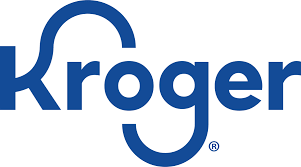
09 Jul The Kroger Co (KR)
2020 was a tough time for many industries, however, it was a windfall for others. The retail supermarket industry was one of those that received a boost from having a population stuck at home. With no restaurants, consumers were forced to eat at home. However, only the companies that were prepared were able to take advantage. Those that had well developed online capabilities and self-service and delivery models were the ones that profited the most.
Kroger was old school. In fact, it’s really old school. From 1883 to be exact. It was started in this year by 23 year old German immigrant Bernard Kroger in Cincinnati Ohio when he paid $372 to open a grocery store in the downtown CBD. But what started from humble beginnings has now risen to be America’s largest supermarket chain by revenue and its second largest retailer behind Walmart.
It is now the fourth largest private employer in the US with 2732 supermarkets and multi-department stores(as of May 2021) across 35 states, with store formats that include hypermarkets, supermarkets, department stores, and 144 jewellery stores. It operates 35 food processing and manufacturing facilities, 1603 supermarket fuel centres, 2254 pharmacies, and 224 medical clinics.
During the pandemic, Kroger moved quickly to enhance its online and service capabilities. It had already, in 2018, taken a $1.8 billion stake in European online grocer Ocado Group, which gave it an exclusive relationship with its digital expertise, thereby cutting out competitors access to the technology. The partnership was designed to improve Kroger’s e-commerce, home delivery, and curbside pickup services. It is now possible for 97% of Kroger’s customers to have their groceries home delivered or picked up without having to leave their car. It is estimated that 47% of shoppers will keep using these services even when the social distancing phase is behind us.
Kroger is already ranked in the top 10 companies for e-commerce sales in 2021. And while competitors Target and Walmart have seen their digital sales skyrocket, it is Kroger that is expected to catch up the most ground in this area, but no one seems to be talking about it. According to data from Emarketer, Kroger will have the fourth fastest-growing e-commerce business this year. E-commerce sales are expected to account for 15.3% of total retail sales this year, and that number is expected to jump to 23.5% by 2025. This says to me that if you can increase your share of the e-commerce pie you have a lot of growing to do.
Kroger is also leveraging its size advantage to increase its own advertising potential. In 2019 they partnered with Microsoft to create data mining capabilities to pick the brains of their customer base through its loyalty programme. 96% of Kroger customers are signed up to the programme which gives them access to more than 60 million households across the country.
The Kroger Precision Marketing (KPM) division has the ability to track in-store and online sales to quantify the success of individual advertising campaigns. Director of KPM Brian Spencer explains “we consider more than 3,000 different variables, and use machine learning to find the best households for brands to go after. When we apply that data science, we can identify households that are 3x more valuable than the average Kroger household.” This has seen the KPM division pull in $150 million in profit last year, a small but growing number, but the real advantage is expected to be the ability to drive store sales higher thanks to targeted advertising.
Its latest earnings report proved to be a surprise for analysts who were expecting Kroger to struggle to match last years pandemic boost. What they saw was only a modest decline in revenue and guidance that easily beat expectations. Both sales and profit were higher than expected with the profit margin an impressive 23% despite rising prices and higher labour expenses. Management is expecting 2-year operating profit to rise between 9-11%, suggesting that the growth they are seeing post-pandemic is much stronger than what we saw prior. They added a further $2 billion to the cash pile in the quarter, and the board authorised a $1 billion share buyback programme.
Kroger looks to me to be a company that has come out of the pandemic stronger than when they went in. They are using their size advantage to harness growth through digital sales and enhanced delivery chains. Customers are sticking around thanks to the improvements, and margins are widening as Krogers homegrown products come to the fore. They are using their recent cash windfall to reinvest in store remodels and in new offerings to customers. The stock buybacks and dividend increases are an added bonus. I see Kroger as a long term hold as long as it continues to grow its online presence and increase profit margins. Buy on any dips.
